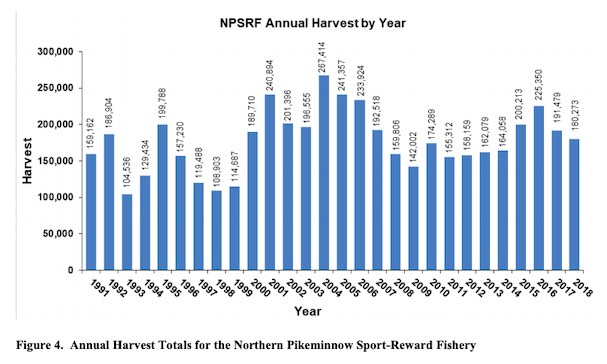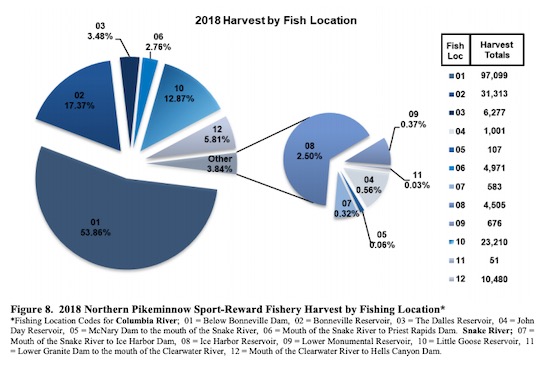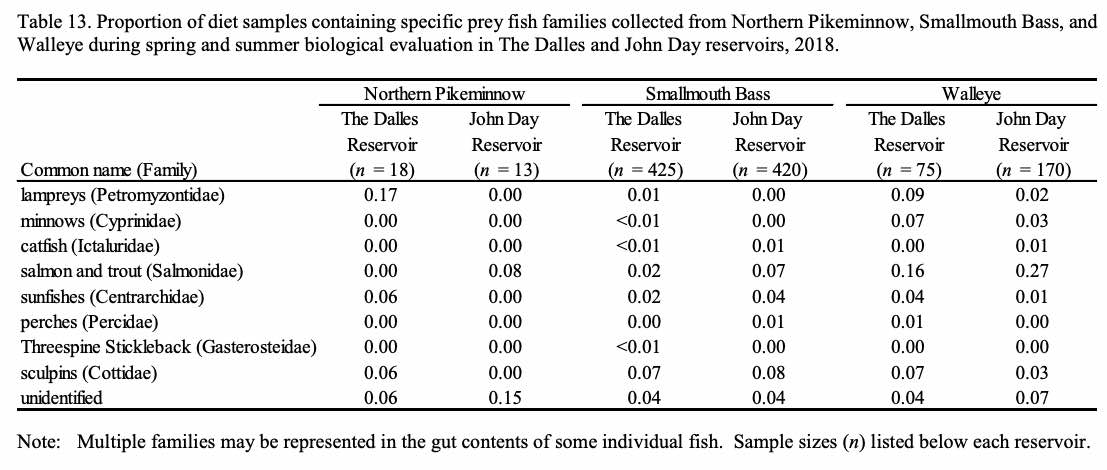forum
library
tutorial
contact

Anglers Paid $1.1 Million for Catching
Northern Pikeminnow in Columbia, Snake Rivers
by Zach Urness
Statesman Journal, December 13, 2019
|
the film forum library tutorial contact |

|
Anglers Paid $1.1 Million for Catching
by Zach Urness
|
 It pays to go fishing.
It pays to go fishing.
Anglers across the Pacific Northwest were paid $1.1 million this year for catching and removing 146,000 northern pikeminnow from the Columbia and Snake rivers.
Pikeminnow prey on salmon and steelhead smolts, protected under federal Endangered Species Act, as they migrate toward the ocean.
To improve survival rates, the Bonneville Power Administration has rewarded anglers with $5 to $8 per pikeminnow removed from the system for the past three decades. The pikeminnow must be over 9 inches to quality, and there are a few specially tagged fish that anglers can reclaim for $500.
In 2019, a total of 2,700 anglers claimed a reward, including one angler who was paid $53,000 for catching a whopping 6,482 fish.
The program's goal is not to eliminate northern pikeminnow, which is native to both rivers, but "rather to reduce the average size and number of the predatory fish," BPA officials said in a news release.
"Large northern pikeminnow are responsible for eating the most salmon and steelhead smolts," said Eric McOmie, BPA program manager. "Reducing the number of large pikeminnow can help more young salmon make their way to the ocean, which means more of them will return to their home streams as adults."
 The rewards to anglers are paid by ratepayers to BPA, which operates the Columbia River Basin's system of dams and is responsible for mitigation efforts for endangered salmon and steelhead.
The rewards to anglers are paid by ratepayers to BPA, which operates the Columbia River Basin's system of dams and is responsible for mitigation efforts for endangered salmon and steelhead.
Pikeminnow have also been blamed for feeding on endangered lamprey, which has seen declining numbers.
"Lamprey are often found in the diets of the northern pikeminnow," said Mac Barr, Oregon Department of Fish and Wildlife Predation Studies project leader. "In 2019, we began exploring ways to better estimate how many juvenile lamprey in the Columbia and Snake rivers are eaten by the northern pikeminnow. Understanding the predation rates on lamprey is important because they are a state sensitive species as well as a federal species of concern and are culturally important to many Columbia Basin tribes."
To learn more about the program that pays anglers to catch fish, see: www.pikeminnow.org.


The fisheries and biological evaluation of the potential predatory impact by Northern Pikeminnow and success to suppress its predation on juvenile salmon and steelhead through the removal fisheries is limited in scope. Ongoing monitoring does not allow evaluation of any lower trophic interactions between younger age fish and systemic changes to their environment. With the exception of lower catches of Northern Pikeminnow, the results of the periodic biological evaluations in The Dalles and John Day reservoirs generally show no consistent changes. However, increases in density of other fish predators can decrease the success of reducing predation by removing Northern Pikeminnow.
. . .
Increases in Smallmouth Bass and Walleye abundance observed in The Dalles and John Day reservoirs could reduce the benefit of removing Northern Pikeminnow as these fish also prey on juvenile salmon and steelhead.
learn more on topics covered in the film
see the video
read the script
learn the songs
discussion forum
